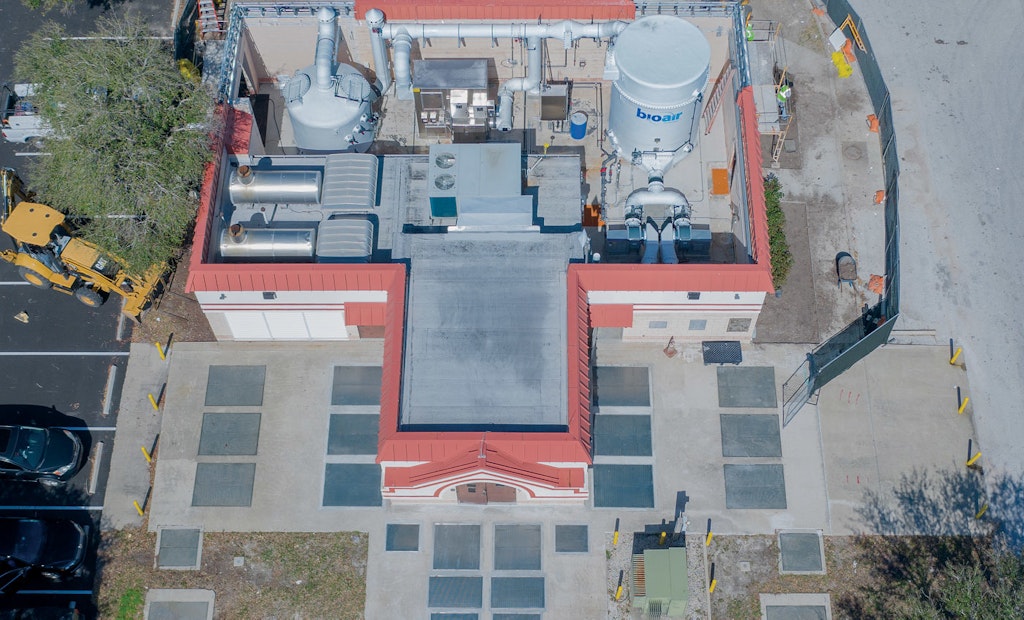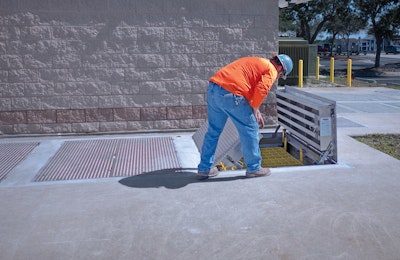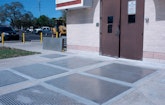
Pinellas County Pump Station 16 had long suffered from odor problems before a $2 million renovation that replaced the station’s major components.
Interested in Infrastructure?
Get Infrastructure articles, news and videos right in your inbox! Sign up now.
Infrastructure + Get AlertsA sophisticated pump station utilizing innovative technology is helping clear the air in Seminole, Florida.
Pinellas County Pump Station 16 is one of the county’s major stations and moves wastewater from four collections basins in the area. Odor problems around the station, which is located in a commercial zone with nearby businesses, had caused significant consternation within the community.
“It’s like rotten eggs, really bad rotten eggs,” Kris Van Kirk told local ABC affiliate WFTS before the project started. Van Kirk works at a car wash near the pump station. “It’s a stench so bad that it will make your stomach turn.”
Earlier this year, the county completed a 13-month, $2 million renovation of Pump Station 16. The renovation replaced major components to a station that was constructed about 30 years ago. Over time, system components degraded in the highly corrosive atmosphere and caused foul odors to seep into the surrounding area. After numerous community complaints, the county started a process two years ago to renovate the station, with construction beginning in January 2019.
Before implementing the new system, Pinellas County took deliberate measures to learn what odors were sifting into the community. “One of the most well-known odors that everyone is aware of is hydrogen sulfide, which is the smell people associate with rotten eggs,” says Tom Menke, Pinellas County Utilities engineering section manager. “But once you treat that, there may be some odors underneath that may come to the top.”
Menke says tests revealed underlying odors from mercaptan, a harmless gas consisting of carbon, hydrogen and sulfur. Mercaptan has the smell of rotting cabbage or eggs and is often added to natural gas to make leaks easier to detect. It is also highly corrosive.
Ozone polishing
Dealing with the station’s odor issues required the implementation of new pretreatment measures. Perhaps the most unusual aspect of the newly installed system is an ozone polishing component (Engineered Air) that combats mercaptan. The polishing helps reduce odors that might escape the wastewater treatment plant. Ozone treatment has been used in treating drinking water, but it is relatively new in the wastewater industry.
Using a generator, ozone is created by imposing a high-voltage alternating current across a dielectric discharge gap that contains an oxygen-bearing gas. Ozone is unstable and decomposes into oxygen shortly after generation.
Ozone-generating systems are generally used at medium to large-sized plants, according to the Environmental Protection Agency. Ozone is more effective than chlorine in destroying viruses and bacteria, and the ozonation process utilizes a short contact time. Ozone is also generated on site, reducing shipping and handling costs and resulting in fewer safety problems.
The EPA says ozonation also has some disadvantages. It is not economical for wastewater with high levels of suspended solids, biochemical oxygen demand, chemical oxygen demand or total organic carbon. Systems can also be expensive, and ozone can be irritating to the lungs. It is also corrosive and should be used with corrosion-resistant material, such as stainless steel.
Menke says ozone treatment is rare for Florida, but the county knew it needed to upgrade its system.
It also replaced a chemical scrubber unit that had lost its effectiveness. “Chemical scrubber systems work well to a point, but we thought it was in our best interests to replace it,” Menke says. “This system is biological, not chemical, so it should be better for the environment.”
Additional measures
Two other components were also included in the renovated pump station. One process includes the use of activated carbon (BioAir Solutions) to bind different chemicals through adsorption, which is the adhesion of a thin layer of molecules to the surfaces of liquids with which they come in contact. The carbon removes organic and some inorganic substances. For years, activated carbon has been an effective treatment to remove contaminants from wastewater streams.
Trickling filters from BioAir Solutions were also used in the new system to remove organic matter from wastewater. The filter is an aerobic treatment system that utilizes microorganisms attached to a medium to remove organic matter. As the wastewater flows over the medium, microorganisms already in the water gradually attach themselves to the rock, slag or plastic surface and form a film. The organic material is then degraded by the aerobic microorganisms in the outer part of the slime layer.
An opening
The conditions that caused the stench seeping into the community also impacted equipment at the pump station. Floor doors that allow access to valves and pumps saw serious corrosion.
“The existing doors did not close well,” says Jake Warren, whose company, TLC Diversified, completed the system overhaul. “I was scared to walk on some of them because they were so corroded. When you put something in that environment, it will corrode, especially over a long period of time.”
The renovated facility includes 16 aluminum doors manufactured by The BILCO Co. Some of the doors were BILCO’s JD-AL H20 doors, which are reinforced for AASHTO H-20 wheel loading. That feature allows heavy trucks and other industrial equipment to park on them.
The new doors carry a 25-year warranty and are equipped with type 316 stainless steel hardware for superior corrosion resistance and BILCO’s patented lift assistance for easy, one-hand operation.
No more complaints
Menke says residents and store owners are relieved the new system is in place.
“Everyone in the community experienced the odors that were coming out of that system. We have a good system working now.”
About the Author
Thomas Renner writes on building, construction and manufacturing for U.S. trade publications.







